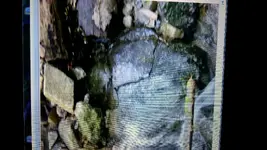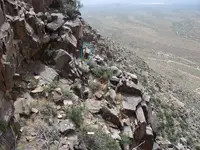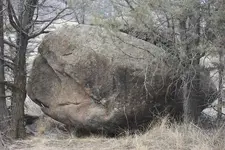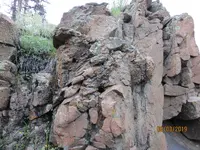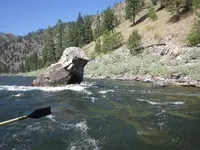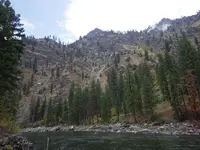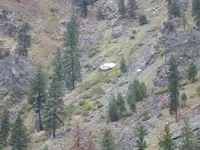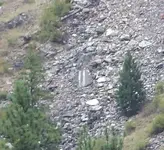Here, Not sure if this will help any, I'll show you a rock with a drill hole on the side of it, and two separate places the rock goes to. The rock is an A frame from two angles, a heart another, depending on how far you are away, the angle you are looking at it, along with the position on the hill you are viewing it from. (it's a pyramid rock/"A" frame from both places you end up at) .
Anyways, the drill hole is on it because it is an important rock that is used to line up to other spots. As you will see both of these spots that you are lead to have a nice small heart lying next to them on the ground.
I can't confirm these are dig spots or next to dig spots, as I never spent alot of time on them. But it should be fairly to easily see that they were using them to align to spots.
My backpack stays in the same location to give you an orientation of where some of the photos were taken.
The first 2 photos are the rock with a hole on it's side viewed from two close up angles.
The 3rd photo is one of the spots it leads to, there is an owl or set of lobes part-way that you line up a few feet above the beer can. The beer can was nearby , I put it next the heart so my buddy I was with would see it when he came back down off the hill as he got side-tracked looking around for other stuff. I circled the drill hole rock up top, which is an A frame rock from that angle.
The 4rth photo is taken back by the drill hole rock again, and shows alignment thru a flat pentagon and large boulder that will have an X on it's backside (red line). The yellow line goes directly to a heart on the ground and it is where the topline pointer or ridgeline of the rock with the drill hole on it points (you may notice it is also a heart lobe) . Both lines end up pretty close to each other.
The 5th picture is taken from near the heart on the ground and you can see the drill hole rock sticking up in the background , as well as the heart on the ground and the large "X" shape on the back of the larger boulder.
The 6th picture is a close up of that heart.
Don't know if this will help any, these sites are all a little different but yet the same in many ways. Sometimes there are helper rocks, sometimes they are gone. I did not take auras here, perhaps I will sometime but I have no intention of digging there.
So this is how I "sign read" I read the markers that take shapes or have markings on them and line them up.
